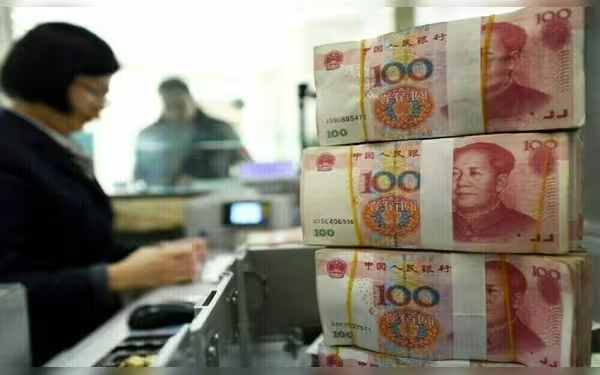Saturday, November 16, 2024 07:29 PM
Yuan Hits 3-1/2-Month Low Amid Trump Tariff Threats
- Yuan weakens to lowest level since August 2.
- Trump proposes tariffs over 60% on Chinese imports.
- PBOC sets midpoint rate at weakest since September.
 Image Credits: brecorder
Image Credits: brecorderChina's yuan weakens to a 3-1/2-month low as Trump threatens tariffs, raising concerns over economic stability and trade relations.
In recent developments, China’s yuan has experienced a significant decline, reaching a 3-1/2-month low against the US dollar. This downturn is primarily attributed to the strengthening of the US currency and ongoing concerns regarding potential increases in tariffs on Chinese goods, particularly in light of Donald Trump’s anticipated second presidency. Historically, during Trump’s first term, the yuan weakened by approximately 5% against the dollar following the initial round of tariffs imposed in 2018, with an additional decline of 1.5% the following year as trade tensions escalated.
As Trump campaigns to enhance American manufacturing, he has proposed imposing tariffs of 60% or more on imports from China. Such tariffs, along with other economic policies like tax cuts, are expected to be inflationary, which could lead to sustained high interest rates in the US. This scenario poses a challenge for currencies of trading partners, including the yuan. Roman Ziruk, a senior market analyst, noted that the yuan has been significantly affected by the recent US election results, indicating that the relationship between the US and China may become increasingly complex.
On Tuesday, the onshore yuan fell to a low of 7.2333 per dollar, marking its weakest level since August 2. It later traded at 7.2267. Meanwhile, the offshore yuan followed suit, hitting a near 3-1/2-month low of 7.2454 per dollar before stabilizing at 7.2393 around midday. Overall, the yuan has depreciated by 1.5% against the dollar this month and is down 1.7% for the year. To counteract this rapid decline, major state-owned banks in China have been actively selling dollars in recent sessions, as reported by various sources.
Before the market opened on Tuesday, the People’s Bank of China (PBOC) set the midpoint rate at 7.1927 per dollar, which is the weakest rate since September 12, 2023. This rate was slightly firmer than market expectations. Analysts have observed that the PBOC has shown limited resistance to the rising US dollar through its daily USD/CNY fix. If Trump reiterates his tariff plans leading up to his inauguration in January, it is anticipated that the USD/CNY exchange rate could rise back to the cycle highs of 7.30 to 7.35.
Additionally, the market has shown a muted response to China’s weak credit lending data for October. Despite efforts to stimulate the economy, the demand for credit has not seen a significant increase. This situation highlights the challenges facing China’s economy as it navigates through a complex global trade environment.
The weakening of the yuan against the dollar is a reflection of broader economic tensions and uncertainties. As the global economic landscape continues to evolve, it is crucial for investors and policymakers to closely monitor these developments. Understanding the implications of currency fluctuations and trade policies will be essential for making informed decisions in the future.













